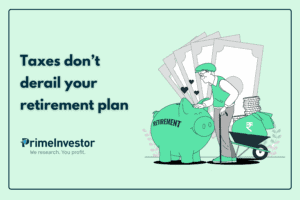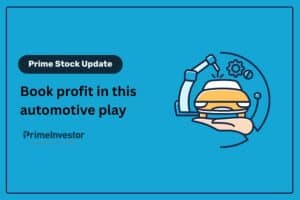With data and inputs from Bipin Ramachandran.
In our quest for the best asset allocation, we had looked an all-equity portfolio in our previous article and explained that 100% equity portfolios often don’t work in real life. This is because investors get tempted to exit them prematurely, when big losses arrive.
Our analysis showed that an investor who held an equity-only portfolio in the last 20 years would have had to put up with a 57% crash in his portfolio value in the worst year, while experiencing loss-making years 18.6% of the time. Many investors, especially new ones, may not fancy a ride in such a bumpy roller-coaster and may hop off midway.

Asset-allocated portfolios give you better confidence to buy and hold, because you face much lower return volatility and make lower losses in bear markets.
So, what should your ideal asset allocation be? Should you go for a portfolio with 60% equity and 40% debt? Or will other combinations like 50/50 yield better results?
No single best asset allocation
There’s no single combo that is best for every investor. Investors should set their asset allocation based on their objectives. An investor who wants to get to a 10% return with manageable losses needs a very different asset allocation from one who wants to max out his returns.
This is why, to figure out what different asset allocation patterns deliver to the investor, we ran a rolling return analysis for different equity-debt combinations. The results we have presented below are based on real-life returns on equity and debt in India in the last twenty years. In this analysis, equities were represented by the Nifty100 index and debt by SBI Gilt Fund (long history). The data below is derived from a rolling 1-year return analysis from January 2003 to February 2024.
The table shows the point-to-point portfolio CAGR for each equity/debt combo, its average 1 year rolling return, its maximum and minimum annual returns and other measures like Sharpe Ratio, proportion of lossmaking periods and periods with returns that topped 12%.
Takeaways from the data
- One simple way to use this data is to see the range of your target returns and choose the appropriate asset allocation from the table. For example, even if your return expectation is, say, 12-15%, this data will tell you that you need not take very high risk to achieve it. A 70:30 portfolio actually delivers superior risk-adjusted returns (sharpe) with probability of earning over 12% not too different from a 100% equity portfolio. So this data will tell you that you need not go all out on equity to achieve your returns. But do remember, you cannot have an unrealistic return expectation and hope you will never lose money. When some of you write to us asking for 15% return with no risk of loss in any year, the above data should remind you that it is not possible.
- The data shows that higher your target return, the more your equity weights should be. This is obvious, but you will notice that in the last 20 years the Sharpe Ratio was the lowest for equity-heavy portfolios and improves as the investor added debt. The Sharpe Ratio of a portfolio is a statistical measure of how much returns you earned for every unit of risk taken. The data tells you that significant improvements in Sharpe can be achieved even by adding 20% debt to a 100% equity portfolio. The ratio gets better as you add in more debt. But it peaks out when you get to a 30-70 combination. Adding debt weights beyond 70% doesn’t improve your risk-adjusted return. This goes to show that if you’re keen on maximising returns per unit of risk, 40-60 or 30-70 portfolios do the trick.
- Higher the equity weight, higher are the losses suffered in the worst years as well as lossmaking years. But the data shows that by moving from 100% equity to a 60-40 portfolio, the investor could reduce the maximum draw-down he suffered from a stomach-churning 57% to a more bearable 33%. A 60-40 portfolio also subjected the investor to losses only 11.9% of the time instead of 18.6% with an equity-only portfolios. A 100% equity portfolio delivered a portfolio CAGR of 15.86% against 13.5% on the 60-40 portfolio. Many folks may find the 2.36 percentage point sacrifice in returns, worth it if they can trim draw-downs and the lossmaking years materially. In fact, the results for a 60-40 portfolio could be better in future if equity markets do not crash as much as they did in 2008 (when they sank 57% on the back of the global financial crisis).
- Moving from a 60-40 to a 50:50 portfolio very substantially trimmed the investor’s draw-downs. It reduced the maximum loss from 33% to 26.1% while making losses less than one-tenth of the years, against about 12% of the time with 60-40. A 50-50 portfolio still managed an average 1-year rolling return of 12.9% while a 60-40 portfolio delivered 14%.
- For conservative investors, the good news is that you didn’t need an equity-heavy portfolio to get to a double-digit return. In fact, moving from a 60-40 to 40-60 portfolio in favour of debt, cut the investor’s returns by less than 2 percentage points from 13.5% to 11.7%, still decent return. It also trimmed the maximum loss from 32.3% to 19.9% and the probability of losses from 11.9% to 7.6%.
- 40-60 or 30-70 portfolios may thus be ideal for retirees who would like to minimise draw-downs in capital. They would also work well for conservative investors who would like to participate in equities without losing too much money in bad times.
Finally, you’d have noticed that no amount of juggling the asset mix in the above data, could deliver a Sharpe ratio above 1 or lead to zero lossmaking periods. This is because this analysis is based wholly on rolling 1-year returns. Even if you hold a small proportion of equities in your portfolio, one year is too short a holding period. In our future articles on this subject, we will be dealing with rolling returns over 3-, 5- and 10-year periods as those lessons will be more useful for seasoned investors who can take yearly drawdowns.







42 thoughts on “70/30, 60/40 or 50/50: Which is the best asset allocation?”
Nice, very reassuring !
Hats off. Such articles prompted me to subscribe for Prime Investor. It adds lot of value. As a retiree I have been operating on 70/30 basis but was always wondering whether it is too conservative. I feel greatly relaxed today.
There is a concept of reducing equity allocation as one approaches goal. ie in your accumulation stage if you have started with 60% or 70% equity and you want to bring it down as you approach goal what is the best method? I did it based on 2% reduction every yr over 20 yrs but do not know if that is right.
I have a mail from PI which says that where goal is 10 yrs away, rebalancing may not be required. Can it be backed up with such an analysis? I need for a young family member.
Thanks so much! Yes rebalancing is not needed if the goal is over 10 years away. But this is only for seasoned investors who won’t panic if stocks tank in a particular year
Any mathematical simulation or any other analysis available to back up this. ? This is contrary to general advice that on deviation of +/-5%, you should rebalance. Also when you are following reducing equity allocation for 20 yrs goal, this means you should start the process only when u are 10 yrs away?
Well rolling returns over 10 yr periods show zero probability of losses and high prob of double digit returns.
Aarati, this is one of the best value-per-word articles. Thanks for consistently offering us with these insights. I’m looking to dip my toes into the small-cap space. Are there any articles that you or the PI team could recommend? In any case, I would be much obliged if you could write a piece on Indian small-cap investing, highlighting the opportunities and pitfalls.
Thank you. This was an article by Vidya in 2019 on smallcap stocks. The lessons are very valid even today https://www.primeinvestor.in/varsity/the-big-truth-about-small-cap-investing/
Thank you. Appreciate it!
It will be good to see similar data on one year rolling returns of funds like HDFC balanced or ICICI multi asset fund that have a long history and are taxed as equity. Also look forward to your future articles on 3 and 5 year rolling returns
Best article ever read on this . Thank You. Eagerly waiting to see rolling returns over 3-, 5- and 10-year periods
Balaji
Thank you, will write it soon
More than chasing returns and ratings , Asset allocation is the key , very well explained .
Would like to know the rebalancing frequency recommend or considered
We will be writing on this in future
Thanks for this article. Can you please write an article on what approach has / probably would survive a medium term inflationary environment and in an economy leaning towards de-globalisation.
Will definitely try
Earlier, at the bottom if the articles, there would be a link saying previous article and next article. is that feature removed?
Oh will get it reinstated
Loved this article. Can’t wait for the next one. 10 Year Rolling Return analysis will be crucial for long term investors
Thanks will be writing it!
Will also be looking forward to this “rolling returns over 3-, 5- and 10-year periods for seasoned investors who can take yearly drawdowns” 🙂
I suspect the data will show that an ideal asset allocation will be a mixture of equity – gold – debt. The all weather portfolio is supposed to have 25% each in equity, gold, cash, bonds. I think we can do better with 50% equity, 25% bonds, 25% gold. I believe all Indians should have atleast 20% holding in Gold (I mean Gold as part of portfolio and not as jewellery) to protect the purchasing power and ride over times like 2008 where both Indian equity and Indian debt can take a hit.
We will be writing one with allocation to gold.
in addition to equity, debt & gold one can think of adding a little from real estate as in present time and coming years this part is going to give good returns.
Yes but problem with real estate is lack of liquidity when you want to rebalance.
Do REIT’s also lack liquidity?
In my personal opinion, REIT is the only possibility if you must consider real estate. Otherwise, it’s better to keep real estate out of such analyses. In addition to the lack of liquidity, it’s extremely location specific, has high transaction costs, has a high ticket size and concentration risk (I don’t dare say adding a ‘little’ from real estate!)
Yes Reits are liquid and diversified. But problem is you get exposure to commercial.property not residential. Also taxation of returns us terrible.
Which instrument would you consider for gold, SGB, ETF, or physical gold? These would differ in terms of liquidity and cost.
Also, please add your thoughts about whether one should have gold in the portfolio. Mathematically , adding another variable to equity and debt is likely to throw up some ideal asset allocation with all three.
Will deal with gold in the next one..SGB or ETF is far better than other routes
Comments are closed.